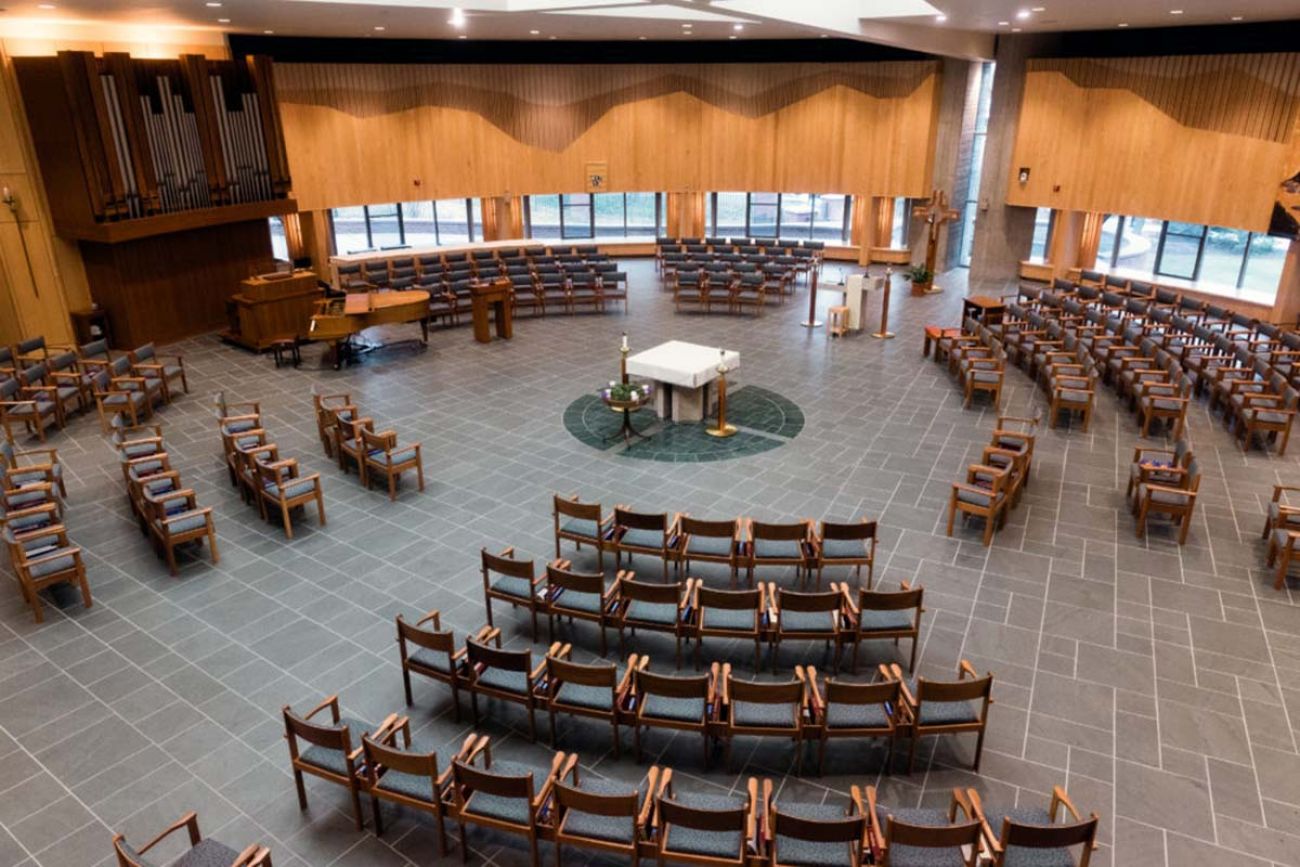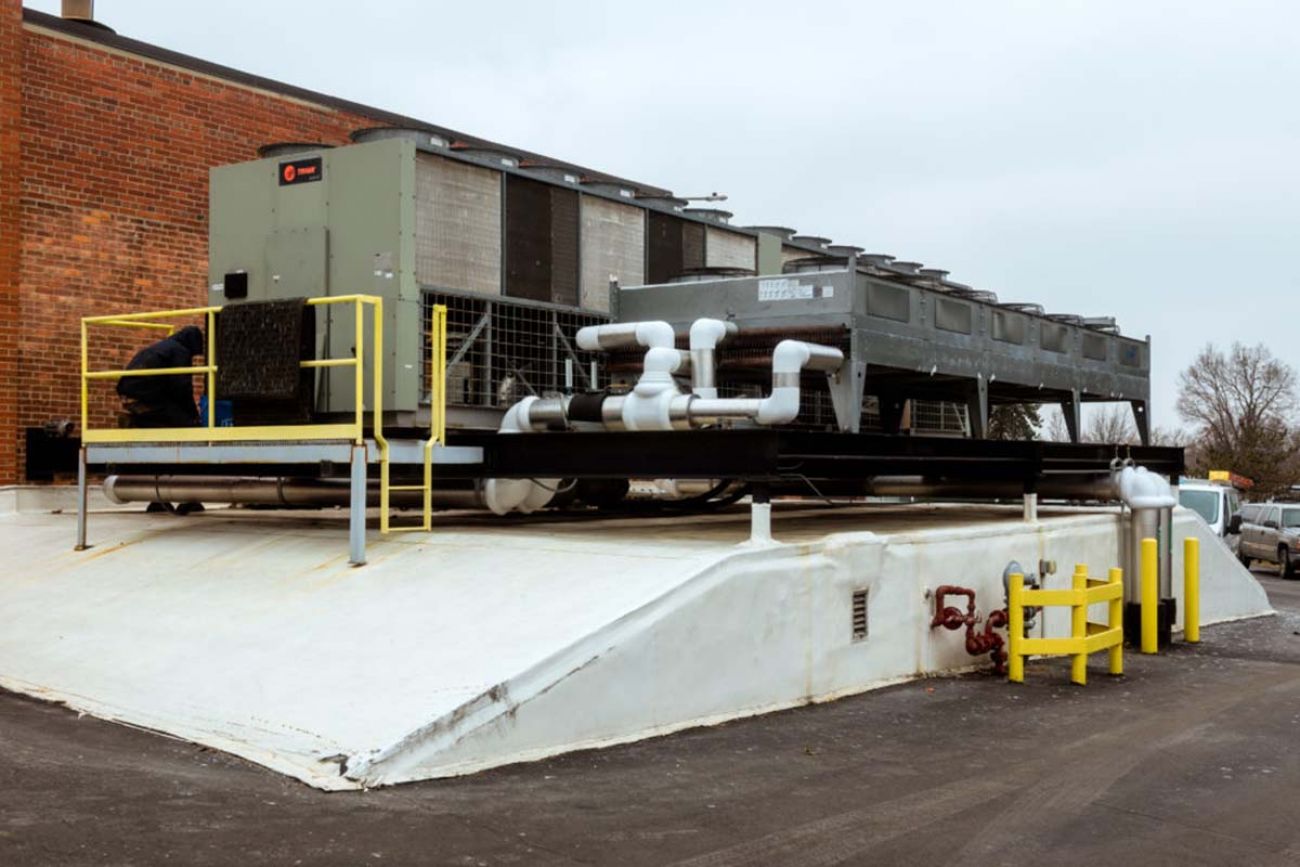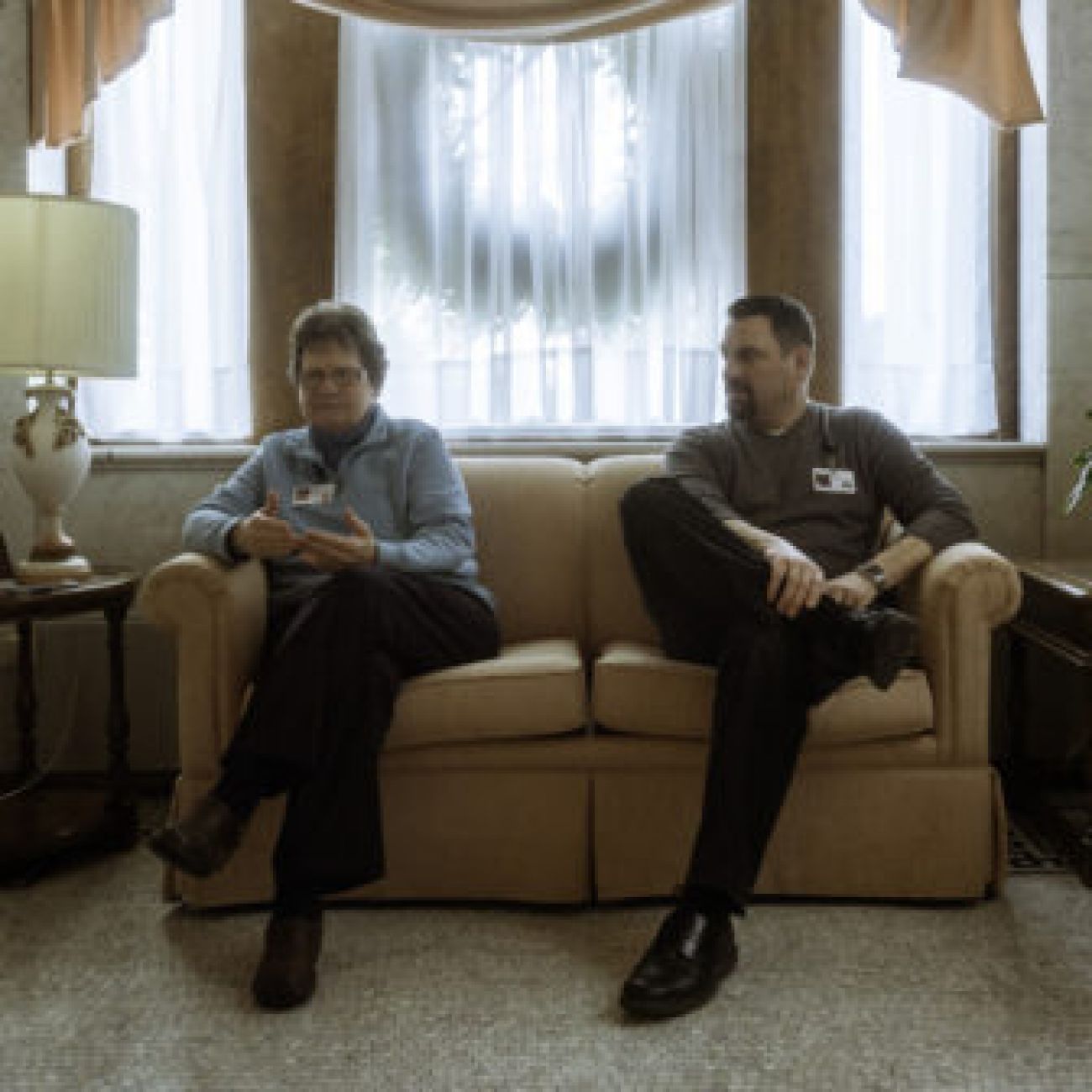These Michigan nuns are fighting climate change, one light bulb at a time

“Sacrifice” is not a word Sister Corinne Sanders takes lightly.
It’s taken on additional meaning the past two years as the Adrian Dominican Sisters have worked to fight climate change.
The southeastern Michigan congregation in 2016 approved a sustainability enactment that says violence against the planet puts it in “dire jeopardy and worsens suffering of people on the margins, future generations, and all creation.”
“We need to sacrifice to mitigate climate change,” Sanders said last month.
Since 2016, the Adrian Dominican Sisters’ campus about 70 miles southwest of Detroit has invested tens of thousands of dollars in clean energy.
Along the way, that “sacrifice” led to savings.
The energy efficiency and demand response savings have allowed the group to enroll in Consumers Energy’s Green Generation program to offset 100 percent of its energy use with renewable generation in Michigan. Consumers says the campus is among Michigan International Speedway and the city of Grand Rapids as the largest participants of the program, which includes nearly 20,000 homes and businesses.
“This has been a long-standing goal of theirs. We were just pleased we were able to find a program to meet their needs and do it in a cost-effective way,” said Phil Walsh, a corporate account manager for Consumers.

Energy efficiency measures include an exhaust gas stack economizer that captures excess heat from boilers to heat water and then campus buildings. Thermal storage water chillers produce ice during off-peak, nighttime hours to distribute cool air during peak times in the summer. Energy-efficient window replacements and LED lights are also key components of the strategy.
“That’s wasted energy — money left on the table,” Joel Henricks, director of facilities and grounds, said of LED replacements. “I have pallets of lights in the garage. We’re trying to get them all installed.”
Instead of financing the improvements, Henricks said it’s easier to pay for them upfront and receive rebates and savings to offset the budget.
Of the campus’ nearly $3.2 million budget last fiscal year, about $92,000 was spent on “climate control” and sustainability, according to an annual report. Henricks said energy usage has dropped 21 percent since 2013 while electric bills are 15 to 20 percent lower on a monthly basis, saving about $50,000 a year.
Shifting energy usage and behavior away from peak times through time-of-use rates has added to the savings. The campus also participates in Consumers’ demand response program, agreeing to scale back usage during high demand periods.
“The congregation is open to some pretty progressive things,” Henricks said of the energy investments. “Financial savings weren’t necessarily our goal, but it’s been a positive byproduct. The importance of that is underestimated. Companies may not be concerned about climate change, but they certainly are over their bottom line.”

Healthcare centers and residences on the 106-acre property need steady temperatures throughout the year. The campus also includes a conference center, central offices and two full-size chapels, totaling about 500,000 square feet of building space. Of nearly 600 vowed women in the congregation, nearly half live at the Adrian campus.
Energy and transportation are two of six areas the group focuses on sustainability. The campus aims to replace its vehicle fleet with less-emitting vehicles as it can while reducing its fossil fuel usage 30 percent by 2022.
The Adrian motherhouse is also in discussions about adding solar panels, following a trend among Dominican Sisters in the U.S. In November, the Sinsinawa Dominicans in Wisconsin unveiled solar arrays that will offset about 30 percent of the campus’ energy use and save $35,000 a year in utility costs. A 2017 installation at the Dominican Sisters of Mission San Jose campus in Fremont, California, will offset about 65 percent of the campus’ energy usage.
“Solar installation is certainly a major move we’re seeing [at congregations] across the U.S.,” Sanders said.
‘A sense of hope’ for climate action
Sanders wrote earlier this year that sacrificing to mitigate climate change is “a confession of faults of a group of women who understand their personal and communal role in the current state of our home, Earth. We recognize our lifestyles, personally and communally, have contributed to the hardship brought to Earth through living out of balance with creation. The statement also is a commitment to change.”
Every six years at governance meetings, Sanders said the congregation voices “what we believe are the pressing needs at the time.” Recognizing the need to address climate change “moved us in a more intentional way” after adopting the enactment on Earth community.
The move also aligns with Pope Francis’ Laudato Si encyclical in 2015, which “puts forward the idea of integral ecology, which suggests how we treat creation affects how we treat our fellow human beings,” according to the Adrian Dominican Sisters.
In a world and political climate still fueled by climate change skepticism, Sanders doesn’t lament.
“I get hopeful and positive,” she said. “Despite the headlines, many businesses and corporations have a commitment to climate change. Even the energy sector realizes it can’t just keep doing life as we have been. There is a sense of hope in that.”
Editor’s Note: This story was republished with permission from the Energy News Network, a nonprofit news site dedicated to keeping stakeholders, policymakers, and citizens informed of the important changes taking place in the transition to a clean energy system. The story’s Creative Commons license can be found here.
More Michigan climate change coverage:
Michigan Environment Watch
Michigan Environment Watch examines how public policy, industry, and other factors interact with the state’s trove of natural resources.
- See full coverage
- Subscribe
- Share tips and questions with Bridge environment reporter Kelly House
Michigan Environment Watch is made possible by generous financial support from:
Our generous Environment Watch underwriters encourage Bridge Michigan readers to also support civic journalism by becoming Bridge members. Please consider joining today.
See what new members are saying about why they donated to Bridge Michigan:
- “In order for this information to be accurate and unbiased it must be underwritten by its readers, not by special interests.” - Larry S.
- “Not many other media sources report on the topics Bridge does.” - Susan B.
- “Your journalism is outstanding and rare these days.” - Mark S.
If you want to ensure the future of nonpartisan, nonprofit Michigan journalism, please become a member today. You, too, will be asked why you donated and maybe we'll feature your quote next time!



